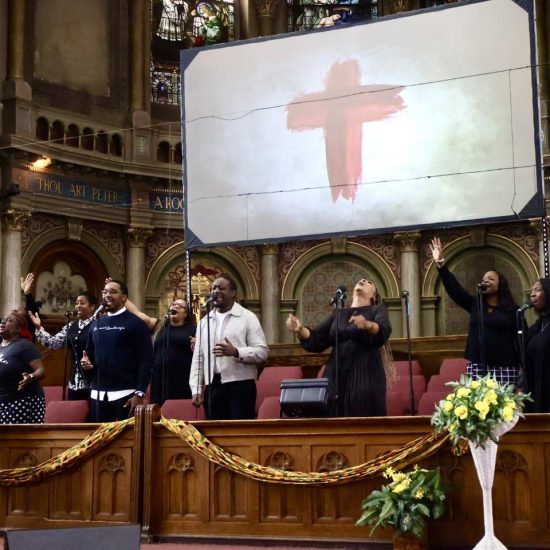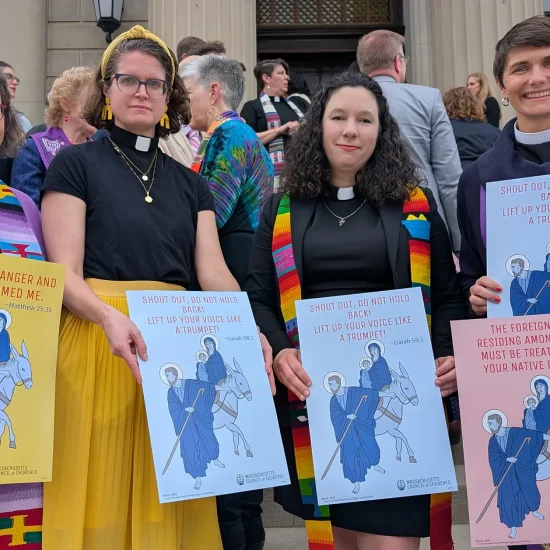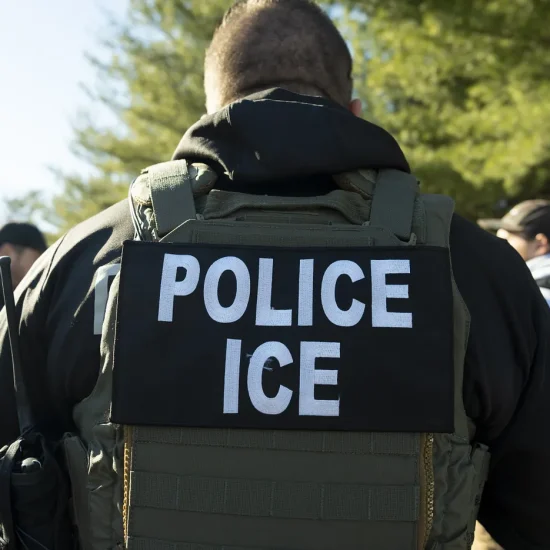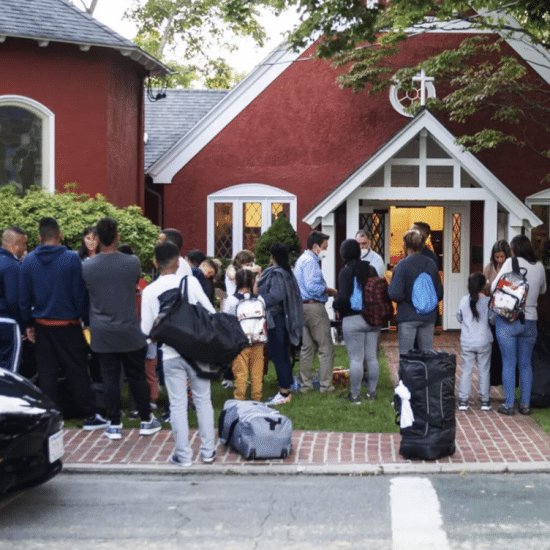Christians should express love for country, experts on the intersection of Christianity and public life agree, but they advise caution in how churches demonstrate patriotism in worship settings.
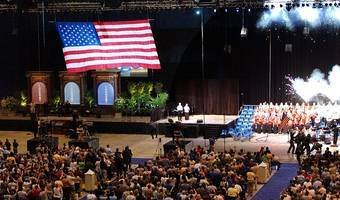
An oversized American flag was lowered from the rafters, soldiers rappelled from above the crowd and fireworks blazed brightly at the Southern Baptist Convention’s Pastors Conference in 2002, held nine months after the 9/11 attacks on the World Trade Center and Pentagon. (FILE PHOTO/BP/Richard McCormack)
|
Patriotic music, flag displays, recognition of veterans’ sacrifice and reminders of “those national values that are consistent with Scripture” could appropriately be featured in a church service around Memorial Day or some other special occasion, said Jim Spivey, a church historian with more than 30 years military experience.
“But all this must be kept in proper perspective, acknowledging that God is the author of life and liberty, and that true freedom goes beyond political liberty and comes only through Jesus Christ,” said Spivey, senior fellow at the B.H. Carroll Theological Institute.
Brent Walker, executive director of the Baptist Joint Committee for Religious Liberty counseled caution regarding the display of the U.S. flag regularly in a sanctuary, unless its display is interpreted properly.
“By no means is a 50-foot flag across the front of the sanctuary that covers the cross ever appropriate,” he noted. But even more common displays of the flag in a worship center can be misinterpreted.
“An American flag displayed alongside a Christian flag could connote an equality of the two kingdoms,” he warned.
Worship leaders should make it clear under all circumstances that love for God transcends love of country—or any other allegiance, Walker said.
Placing the U.S. flag in a church sanctuary on an ongoing basis either can make the symbol of the nation an object of worship or else make it so rou-tine that it becomes almost invisible and loses its impact, said James Dunn, resident professor of Christianity and public policy at the Wake Forest University School of Divinity.
“It’s masquerading as an aid to worship, or it wouldn’t be there. It’s less than honest and less than appropriate for it to be there all the time,” he said.
On the other hand, some occasions seem to call for the display of the U.S. flag—either as part of a display of multiple flags in a missions service or displayed alone at a Memorial Day or Independence Day service, Dunn added.
“It is far more powerful and appropriately used in a legitimately patriotic sense when it’s reserved for special times,” he said.
Rob James, retired professor of religion at the University of Richmond and chair of the Baptist General Association of Virginia religious liberty committee, recommends a high degree of latitude when it comes to judging the appropriateness of an American flag displayed regularly in a worship setting.
“It can be a focus of worship and become idolatrous. Or it can be seen as a way of presenting ourselves be-fore God. We are Americans, and when we gather for worship, it may remind us as we come before God that we need God to judge our pride,” he said.

